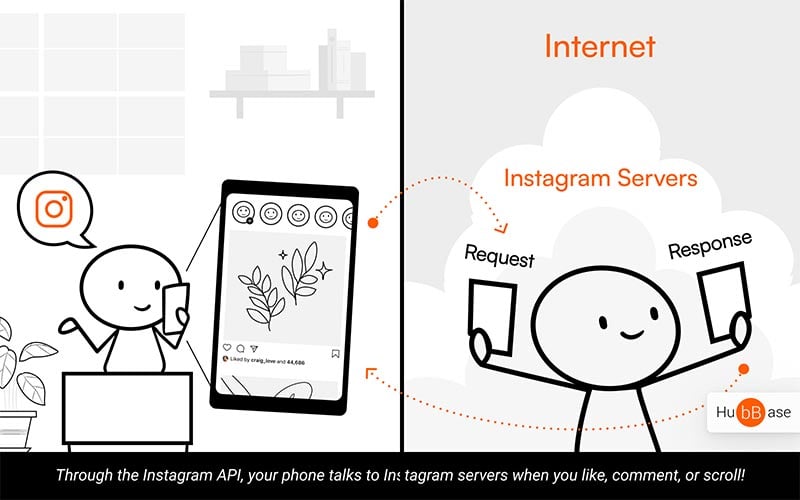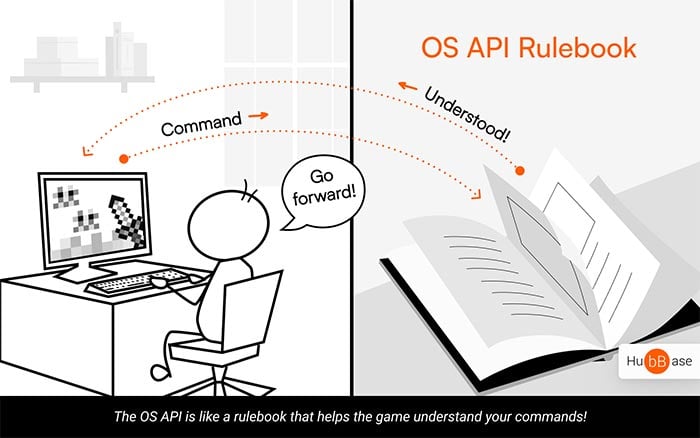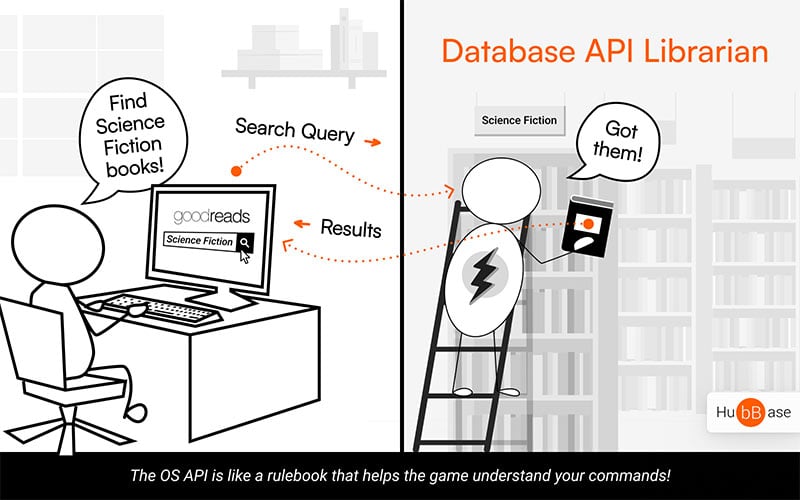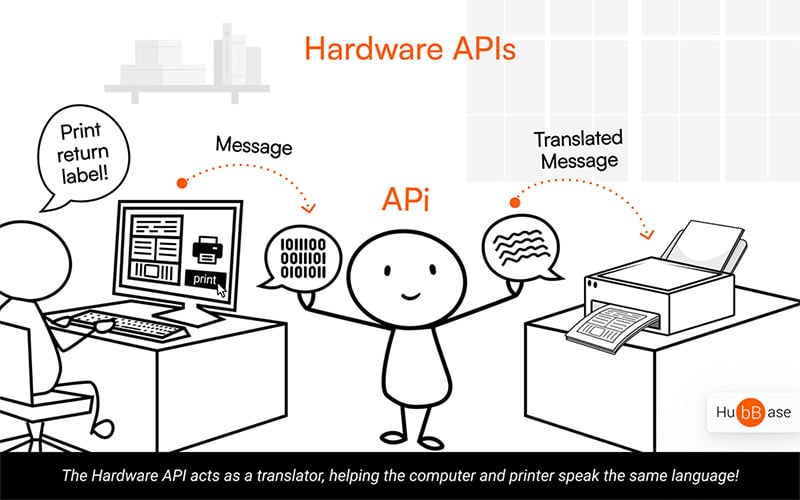How Much Do HubSpot API Integrations Cost
Understanding the pricing strategy for custom HubSpot integrations can help businesses budget effectively. This article...
Leverage our extensive HubSpot development experience to build anything in HubSpot CMS.
Redesign a website with a theme, build a custom one, or migrate to HubSpot CMS
Automate workflows with apps, custom objects, HubSpot API integrations & CRM extensions
Get our Level Up HubSpot theme, or work with us to build a custom HubSpot theme
Build HubSpot Calculators & Interactive Conversion Tools
Make the most of Shopify themes. Connect with us to build a custom Shopify solution
Secure and scalable HubSpot web design for cybersecurity companies
Optimize your brand for AI-driven search with our comprehensive SEO strategies.
In This Article
Updated: December 5, 2024
|
Published: May 30, 2023

Listen to the audio version
Many of us are familiar with API integrations and have a general understanding of how they are used. However, the intricate extent to which APIs are integrated (no pun intended) into our daily personal and professional lives remains underestimated. This realization became clear as I was doing my research for this article.
The way APIs operate silently behind the scenes, facilitating our seamless experience with this digital world of ours, is nothing less than spectacular. Let’s dive into it.
API stands for Application Programming Interface. APIs were created so that different applications could talk to each other. APIs function as a bridge that allows interactions between two different applications, each with its own 'language,' and enables them to exchange information.
The API serves as the agreed protocol that both systems understand. It ensures that System A knows how to ask System B for data, and that System B knows how to respond to System A's request in a way that System A can understand.
API integration is the process of creating a coherent network of applications using APIs. This creates a streamlined data flow between different software platforms. Similar to a USPS postal carrier, which ensures the smooth delivery of mail (most of the time).
APIs come in four main categories:




API integrations come with a multitude of benefits:
API integration follows a series of steps:
Steps to map out the integration:
1.1 When a new customer makes a purchase via Shopify, their contact information should be automatically added to Salesforce.
1.2 Then, the customer’s email address should be added to the HubSpot Marketing Hub mailing list for future marketing campaigns.
In this scenario, API integration would be used to ensure seamless data flow between Shopify, Salesforce, and HubSpot, automating these tasks and reducing manual data entry.
API integration patterns are crucial blueprints that dictate how different software applications communicate with each other. Here's a more detailed examination of common patterns:
Each of these patterns serves specific integration scenarios and comes with its own set of trade-offs. The choice of pattern significantly impacts the ease of integration, maintainability, and scalability of the integrated systems, hence a careful consideration is imperative to align with the organizational goals and technical capabilities.
Ensuring robust security is a cornerstone in API integrations, safeguarding data and operations from potential threats. Here’s a deeper exploration into best practices for ensuring the security of API integrations:
The financial aspect of API integrations is multi-faceted and hinges on several variables:
A detailed financial forecast considering the above factors will provide a clearer picture of the investment required for API integrations. Additionally, it's essential to weigh these costs against the potential operational efficiencies, productivity enhancements, and other strategic advantages that well-implemented API integrations can deliver to your organization.
While API integration has numerous benefits, it's not without potential risks, including data security issues, compatibility problems, and the need for ongoing maintenance. However, with a strategic approach and the right tools, these challenges can be mitigated. Connect with our API developers for a free consultation.
Despite its complexities, a thorough understanding can unveil myriad benefits, enhancing operational efficiency and fostering business innovation.
APIs are the backbone of the modern digital ecosystem, powering everything from web browsing and ecommerce to mobile applications and cloud computing.
Understanding the importance of API integrations is crucial in today's digital landscape, especially considering the rapid growth and expanding market size, as well as businesses’s dependence on more than one cloud platforms.
The API management market is experiencing a significant surge. From a valuation of USD 4.5 billion in 2022, it's projected to reach USD 13.7 billion by 2027. This growth translates to a Compound Annual Growth Rate (CAGR) of 19.5% over the forecast period.
This growth is not just a number; it reflects the increasing reliance of businesses on API integrations for various functions – from enhancing customer experiences to streamlining internal operations and expanding into new markets.
APIs are the building blocks that enable businesses to be more agile and innovative. They allow for the seamless integration of new features and services, keeping businesses competitive and relevant.
In a world where customer experience is king, APIs play a pivotal role in delivering personalized and efficient user experiences, directly impacting customer satisfaction and loyalty.
API integrations automate and optimize business processes, leading to significant improvements in operational efficiency and cost savings.
API integrations ensure that data is consistent and coherent in all the platforms that a business uses. Without integrations, it is impossible to generate correct data insights.
The rapid growth of the API management market is a clear indicator of the critical role APIs play in today's business strategies. Whether it's to drive innovation, enhance customer engagement, or improve operational efficiencies, understanding and leveraging API integrations is becoming increasingly essential for businesses aiming to thrive in the digital era. Work with our API Integrations Team to stay ahead.
API integrations must navigate a complex landscape of legal and regulatory requirements, particularly in sensitive sectors like finance and healthcare. These industries demand strict adherence to data privacy and security standards.
In finance, APIs must comply with regulations like the Payment Card Industry Data Security Standard (PCI DSS) for handling credit card information and the General Data Protection Regulation (GDPR) for managing personal data of EU citizens. This ensures secure and confidential handling of financial transactions and customer data.
For healthcare, APIs are bound by laws like the Health Insurance Portability and Accountability Act (HIPAA) in the U.S., which sets the standard for protecting sensitive patient data. Compliance ensures that patient information shared through APIs remains secure and private, maintaining trust in digital healthcare services.
In both sectors, non-compliance can lead to significant legal repercussions and loss of consumer trust, making it essential for APIs to be designed with these considerations in mind.
The future of API integrations is poised for significant advancements, influenced by the evolution of cloud computing, the emergence of edge computing, and breakthroughs in API technologies.
Projection: APIs will play a pivotal role in cloud-based architectures, facilitating more dynamic, scalable, and efficient cloud services.
Example: APIs enabling seamless integration and communication between different cloud services, enhancing data interoperability and system flexibility.
Projection: The growth of edge computing will see APIs becoming more decentralized, enabling faster data processing and decision-making at the edge of networks.
APIs in smart city infrastructures processing real-time data locally for immediate responses, reducing latency and bandwidth use.
More and more businesses are opting to develop their APIs in-house. This trend is driven by the need for greater security and control over the data and processes that APIs handle. For marketing teams, this means having APIs that are tailor-made to fit your specific needs and goals. Imagine having an API that integrates seamlessly with your unique marketing stack, providing custom analytics or enabling personalized customer interactions, all while ensuring that your sensitive marketing data remains secure.
The pay-per-use model in API integrations is becoming increasingly popular. This approach is particularly cost-effective for marketing teams as it allows you to pay only for the services you use. Whether it's sending out a batch of promotional emails or analyzing customer data, you can scale your usage (and costs) according to your campaign needs. This model offers the flexibility to experiment with different strategies without committing to hefty upfront costs.
APIs are now a standard expectation in cloud platforms. When evaluating cloud services, marketing teams are looking for robust API support. This trend underscores the importance of APIs in integrating various marketing tools and data sources. A cloud platform with strong API capabilities can serve as the backbone of your marketing tech stack, enabling seamless data flow and integration across various marketing channels and tools.
An API-first approach is becoming a strategic imperative. This means thinking of APIs not as an afterthought but as a core component of your marketing strategy. It involves designing campaigns and systems with the API in mind, ensuring greater flexibility, scalability, and innovation potential.
For marketing teams, the world of APIs offers endless possibilities. By understanding and leveraging these trends, you can transform your marketing strategies, create more meaningful customer interactions, and drive business growth in the digital age. Remember, APIs are not just about technology; they are about creating new opportunities and experiences in the ever-evolving digital marketplace.
.png?width=343&height=334&name=Frame%20(3).png)
.png?width=343&height=479&name=Frame%20(4).png)
Dive into our blog to discover a wealth of knowledge and expertise in the world of email services.
Understanding the pricing strategy for custom HubSpot integrations can help businesses budget effectively. This article...
How to integrate HubSpot with all your tools and build custom app HubSpot is an impressive platform for many reasons,...
One of the great things about HubSpot is that it offers a robust API. This makes it easier if you want to connect other...
Solving Business Challenges with 10 HubSpot Workflows Streamlining workflows can solve a lot of underlying challenges...
.png?width=204&height=62&name=Frame%20(13).png)
.png?width=204&height=62&name=Frame%20(18).png)
.png?width=204&height=62&name=Frame%20(11).png)
.png?width=204&height=62&name=Frame%20(12).png)
.png?width=204&height=62&name=Frame%20(15).png)
.png?width=204&height=62&name=Frame%20(16).png)
.png?width=204&height=62&name=Frame%20(17).png)
.png?width=204&height=62&name=Frame%20(17).png)
.png?width=194&height=62&name=Frame%20(20).png)
Copyright © 2025 HubBase, Inc.